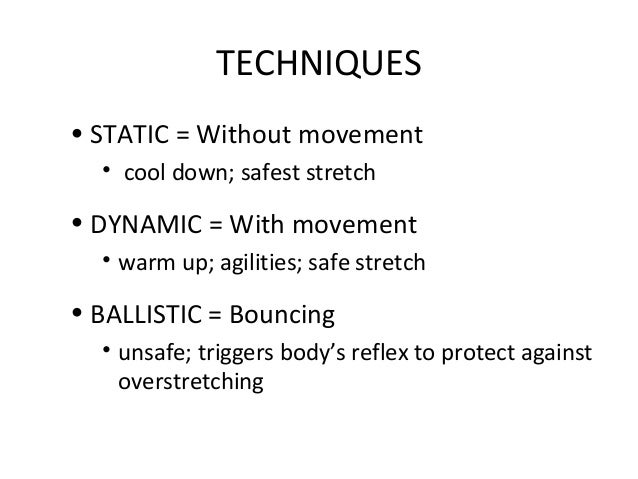

Parsing unstructured natural language into machine-understandable concepts is not feasible in general, although some programs may be able to make partial sense out of Web content. It is envisioned that authors of pages include this semantic information along with human-readable Web content, perhaps with some machine assistance in the encoding. The next phase of the Web, as represented in this book's movement towards the "Semantic Web", lies in encoding properties of and relationships between, objects represented by information stored on the Web. This was OK for browsing small sets of information by humans, but this static model is now breaking down as programs attempt to dynamically generate information, and as human browsing is increasingly assisted by intelligent agent programs. The original perception of the Web by the vast majority of its early users was as a static repository of unstructured data. Set a goal to apply this stretching routine to each workout for two weeks.Static and Dynamic Semantics of the Web Static and Dynamic Semantics of the WebĬlear Methods, 1 Broadway, Cambridge, MA, USA After your routine, perform three to five static stretches. If stretching remains on your list of need to do that more (ahem, right next to flossing), try this: select three to five dynamic stretches and perform them before your next workout. Understanding the difference between static and dynamic stretching is the first step toward incorporating these important movements into your workouts.
#COMPARE AND CONTRAST STATIC AND DYNAMIC FLEXIBILITY. PROFESSIONAL#
Watch professional athletes before a game or match and you’ll likely see them go through some form of dynamic stretching routine. If it feels challenging, it’s supposed to be. Usually, dynamic stretches are sports- or activity-based motions one repeats a number of times. Standing hamstring foldover (touch your toes)Ī dynamic stretch is any repetitive, more challenging motion aimed at loosening up muscles and joints.No bouncing, changing position, or repetition of movement.

A lack of movement-hence the name static-is common to all of these stretches.

A static stretch is, generally, any position you hold-often at the limit of a given joint’s range of motion-to increase flexibility. The difference between static and dynamic stretching comes down to a simple thing: movement. The Difference Between Static and Dynamic Stretching The question is, what’s the difference? And when is it best to do one or the other? Here’s a closer look at the difference between static and dynamic stretches, common applications, and some examples. Typically, a complete stretching program consists of both static and dynamic stretches. That goes for everything from weightlifting and gymnastics to basketball, volleyball, and rec league hockey. For anyone serious about their fitness, stretching is non-negotiable, both before and after workouts. Done right, stretching helps us improve our range of motion, flexibility, and recovery time. Yet so many of us still skip this important activity altogether.Īnd just like skipping flossing, failing to properly stretch is a mistake. We know that it helps our bodies in the long run. We know that it’s important and that we should be doing it.


 0 kommentar(er)
0 kommentar(er)
